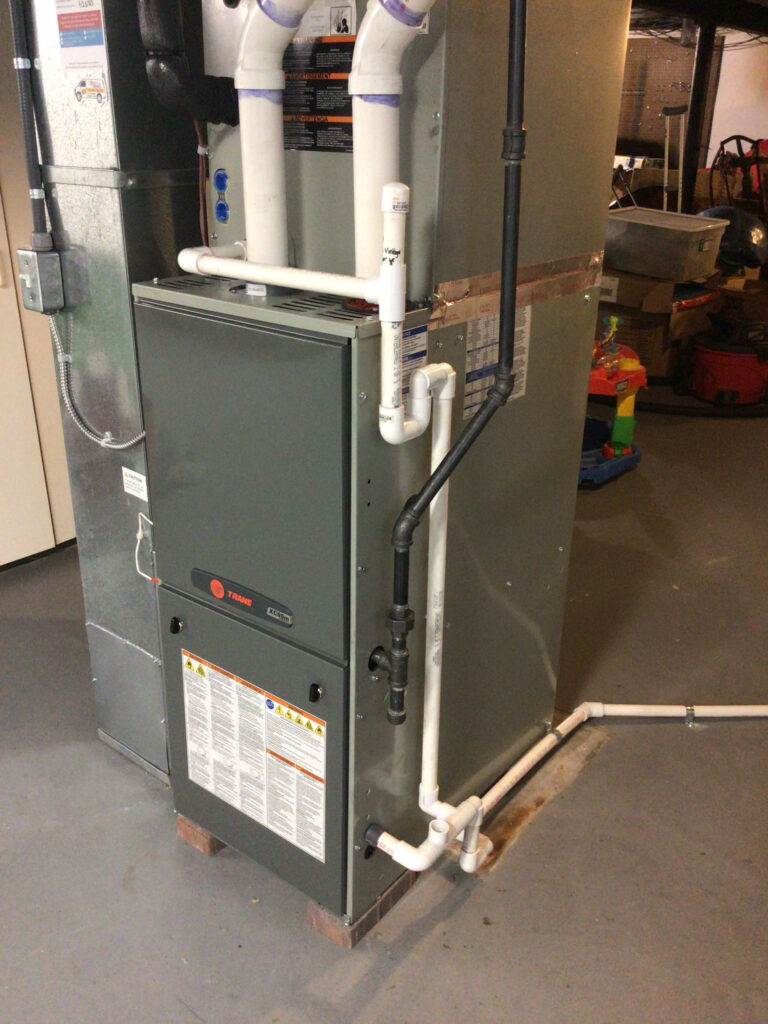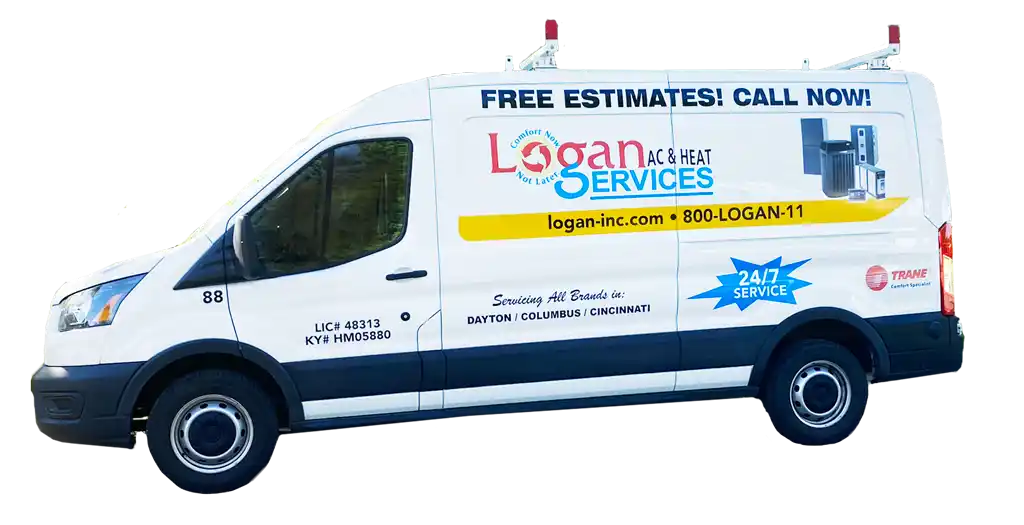If you’re hearing strange noises coming from your furnace blower motor, it likely indicates a problem that needs attention. A noisy furnace blower motor can be caused by a variety of issues, ranging from minor to severe. Addressing blower motor noise as soon as it starts is important – not only for comfort but for safety and energy efficiency as well. This guide will help you diagnose and fix the most common causes of a noisy furnace blower motor.
What Causes Blower Motor Noise?
The furnace blower motor is responsible for pushing heated air through the ductwork and into your home. Over time, normal wear and tear can cause the furnace motor to start squealing, grinding, buzzing, or whistling sound. Here are some of the most common culprits behind furnace motor noise:
- Bearings wear out – Bearings allow the blower wheel to spin smoothly. As they wear, they can create squeaking, grinding, and other friction noises.
- Blower wheel out of balance – An uneven buildup of dirt or debris on the blower wheel can throw off the balance, causing buzzing, humming, and rattling sounds.
- Loose motor mount – The motor is attached to the furnace housing via a mounting bracket. If this comes loose, the loose parts will cause vibration and rattling noises.
- Defective motor capacitor – The capacitor helps start the blower motor. A failed capacitor can cause buzzing, humming, or squealing.
- Bent blower wheel – Contact with a foreign object can bend the blower wheel blades, creating imbalances and noise during operation.
- Debris buildup – Dirt, dust, and pet hair on the blower wheel can throw off balance and airflow, resulting in noise.
Some unusual sounds that can come from a furnace blower motor include whistling and clicking sounds. A whistling sound usually indicates an air leak somewhere in the ductwork, potentially around a loose panel or joint. It happens when air escapes through a small gap. A high-pitched screeching noise may indicate a problem with the motor bearings. If your furnace makes clicking noises when turned on, it can point to an issue in the motor or capacitor. The clicks occur when the components engage and try to start the blower. Both whistling and clicking, as well as high-pitched furnace noises, should be addressed promptly by a furnace technician before causing larger problems.
Diagnosing the Source of Blower Motor Noise
Not all furnace noises point to a blower motor issue. Before attempting blower motor repairs, verify that it is actually the source. Here are some tips:
- Turn off the furnace and spin the blower wheel by hand. Grinding or friction indicates a motor issue.
- Remove the blower motor access panel and run the system. If noise decreases, it points to a motor problem.
- Compare the sound with noisy blower fan noise audio clips online to identify the type of sound.
- Have an HVAC technician inspect the motor with power off to verify the condition and identify causes.
Once diagnosed, address blower motor noises immediately to prevent more extensive damage.
How to Fix a Noisy Blower Motor
Many blower motor issues can be DIY repaired without a full replacement. Here are some common fixes:
Lubricate or Replace Bearings
If bearings are wearing out, you may be able to lubricate them with high-temperature bearing oil according to the manufacturer’s instructions. This can reduce noise and extend bearing life. However, if bearings are excessively worn, they will need replacement. Consult manufacturer spec sheets for proper sizing and orientation.
Clean Blower Wheel
Use a vacuum and soft brush to gently clean the blower wheel fins on both sides. Avoid bending fins. Also, check for debris around the housing that may come in contact with the wheel. Spin it by hand to verify smooth, quiet operation.
Tighten Motor Mount
An unsecured motor mount can create vibration. Inspect existing hardware, tighten all bolts and screws on the mounting bracket, and add lock washers if necessary to prevent loosening over time.
Replace Capacitor
Test capacitance with a multimeter. If out of spec, replace with a new capacitor of the same microfarad rating. Ensure it is connected properly.
Reset Blower Wheel
If blades are bent, use pliers or channel locks to gently straighten them. Adjust to provide uniform clearance from the housing on all sides.
Replace Blower Motor
For excessive bearing wear, burned windings, or severe damage, blower motor replacement may be necessary. Match specifications of the original motor. Allow the furnace to cool before removing it, and disconnect the electrical connections before installing the new motor.
When to Call a Professional
While many blower motor repairs can be DIY, some scenarios warrant a professional furnace technician to take a look:
- Issues requiring blower wheel removal or full motor replacement
- Electrical troubleshooting and capacitor replacement
- Bearing replacement in sealed motors
- If the noise persists after DIY fixes
A furnace technician can assess the cause of the noise and identify the needed repairs. They have the tools, training, and experience for safe furnace blower motor diagnosis and replacement.
Preventing Future Blower Motor Noises
With proper maintenance, you can maximize the lifespan of your furnace blower motor and prevent premature failure:
- Clean blower components seasonally – dust buildup contributes to imbalance and wear.
- Lubricate motor bearings yearly if accessible.
- Ensure all components are securely mounted – check for loose bolts.
- Replace filters per manufacturer recommendations to allow adequate airflow.
- Have an HVAC technician inspect the blower motor and furnace before each heating season.
Addressing noisy blower fan noises promptly can restore quiet and efficient operation. But if you need help diagnosing the problem, don’t hesitate to call in a professional. With their experience and tools, they can get your system running smoothly and silently again.
The Logan Difference
At Logan A/C & Heat, we are a family-owned company that treats every customer like family. We have spent over 50 years building our reputable business in the community by always putting your needs first.
All of our technicians go through extensive training programs, so they are fully prepared for every job. We take pride in the quality of our installations and service, double-checking details on a comprehensive checklist completed for each project.
Our dedicated install managers oversee each job, leveraging their years of HVAC experience to spot any potential issues and ensure everything goes smoothly from start to finish.
We know your time is valuable, which is why communication is key. To avoid delays, we make sure we have all the necessary parts on our truck before arriving at your home. Throughout the installation, we keep you informed on what to expect.
Once the unit is installed, we provide an in-depth walkthrough, showing you exactly how to operate and maintain your new system. We want you to feel completely comfortable with how it works before we leave. We’ll also help register warranties and be a resource for any questions that come up.
At Logan A/C and Heat, we are committed to both our customers and the community. We regularly give back through donations, fundraisers, and helping neighbors in need. We stand behind our work and go out of our way to earn your trust and satisfaction. That’s the Logan Difference.
Frequently Asked Questions (FAQs)
What are the most common causes of a loud furnace blower motor?
The most common causes of a loud or noisy blower fan are worn-out bearings, an out-of-balance blower wheel, a loose motor mount, a defective capacitor, a bent blower wheel, or debris buildup on the wheel.
How can I tell if the noise is coming from the blower motor?
Turn off the furnace and spin the blower wheel by hand to isolate the sound. Remove the blower motor access panel and turn it on to diagnose the noise. Comparing sounds to audio clips of blower motor noises can also help identify the issue.
Is it safe to lubricate the blower motor bearings?
Yes, it is safe to lubricate the bearings with high-temperature bearing oil made specifically for motors. Follow the manufacturer’s instructions. Do not lubricate sealed bearings.
When should the furnace blower motor be replaced?
Replace the blower motor if the bearings are excessively worn, windings are burned out, blades are damaged or persistently out of balance, or electrical issues are identified. Noisy operation despite lubrication and repairs indicates the end of motor life.



















